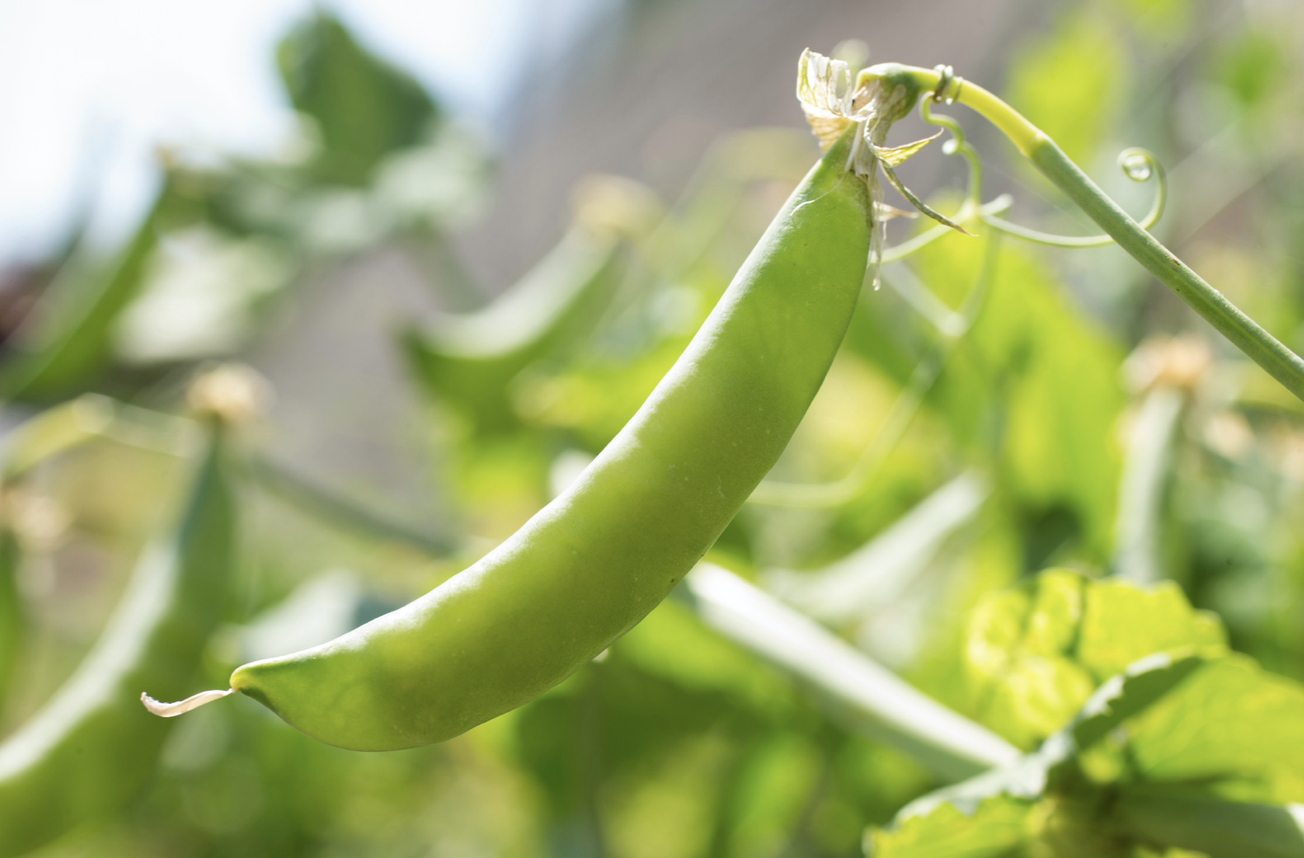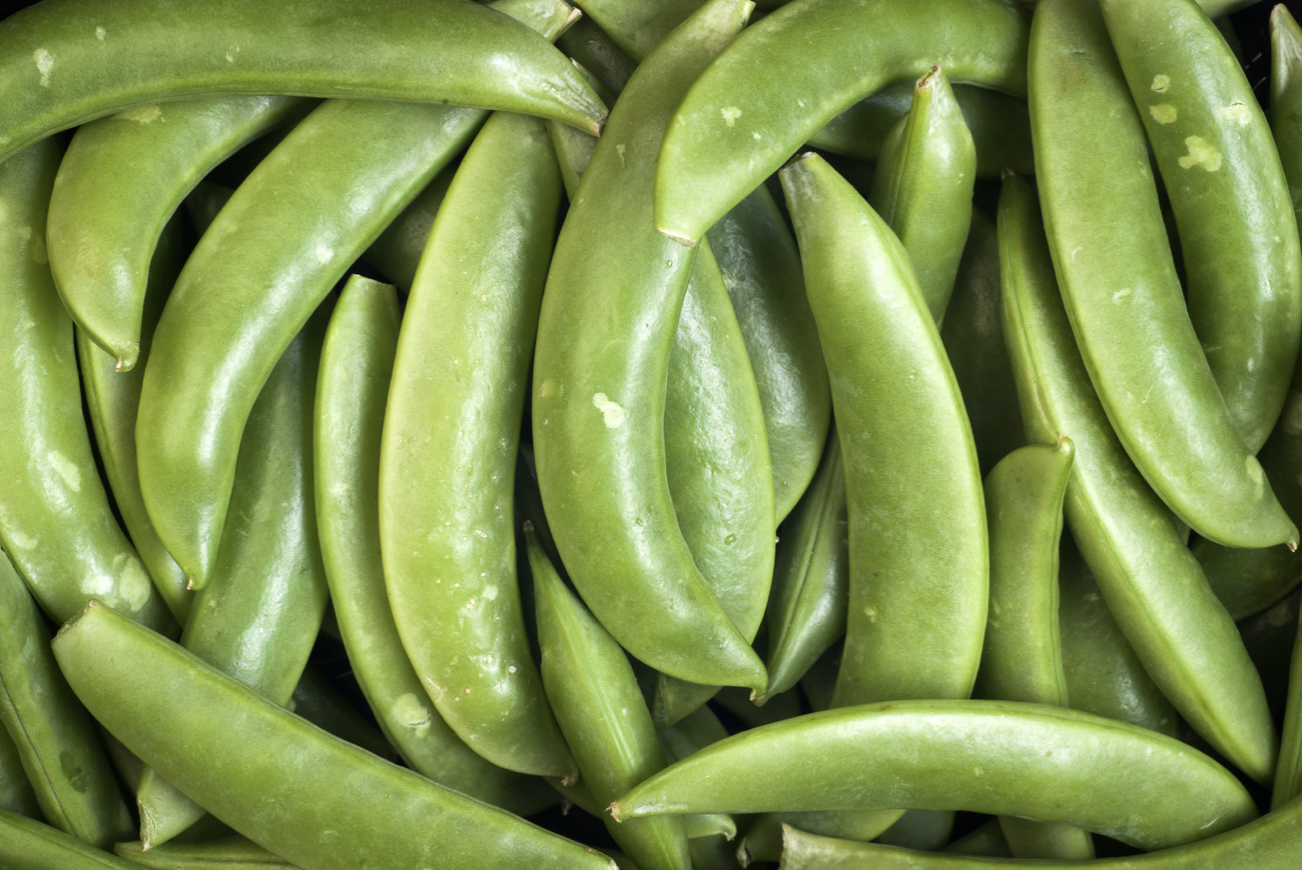Today I Planted Snap Peas
Well, not exactly. I planted seeds for snap peas not the peas themselves - but the seeds look just like shriveled, dried peas. The seeds I planted are Cascadia Snap Peas from Botanical Interests. They are sowed directly into the garden about 4 to 6 weeks before your average last frost date. Transplanting isn’t recommended as snap peas don’t like their roots disturbed. These snap peas will end up about 3 inches long on vines that are self-supporting - although I did install a few short trellises just in case.
Snap peas are different from snow peas and garden peas. While they are all vining plants and belong to the Fabaceae (legume) plant family, the texture and taste aren’t the same.
Snow peas are the ones that are usually used in Chinese stir-fries. They are flat with very small peas inside. Snow peas are mild and can be eaten raw or cooked. Garden peas are sometimes called sweet peas or English peas. The pods are firm and are not eaten. The peas have to be removed from inside the pods, but then the peas may be eaten raw or cooked. These are the peas that are typically found frozen or canned in stores.
Snap peas (also called sugar snap peas) are a cross between snow peas and garden peas. While snow pea pods are flat, snap pea pods are rounded, thick and juicy. Like snow peas, you can eat the whole pod - either raw or cooked. But the peas inside a snap pea pod are larger than those inside a snow pea pod.
Snap peas have a pretty short growing season (but you can plant the seeds again about 8 to 10 weeks before your average first frost date). Harvest snap peas when the pods are fat, rounded and glossy, in the morning after the dew has dried. Use sharp snips to remove the pods from the vines so you don’t damage the plant. And be sure to harvest often! Even though you might like how the vines look full of those awesomely gorgeous pea pods, the longer mature pods stay on a plant, the less energy the plant has to produce new pods and the more chance there is that the peas will turn starchy and inedible.
Snap peas are crunchy and super sweet, which makes them perfect to serve with a hummus dip, alongside carrots, radishes and other veggies. Some varieties of snap peas have a tough string along the pod edge which should be removed prior to eating. But there are a number of varieties now that are stringless.
Snap peas also can be used in stir-fries like snow peas, but my favorite way to serve them is sauteed with a little garlic, whole butter (or ghee) and olive oil. You could even add in a few cherry tomatoes or sliced bell peppers. Throw in some black sesame seeds or chia seeds, season with sea salt and fresh ground pepper, and you’re done.
Now here’s the culinary nutrition part where I share some of the therapeutic values of snap peas. As you now know, snap peas are part of the legume family and, like beans, are full of dietary fiber - especially the pods. This insoluble fiber can help keep your digestive system working efficiently.
Snap peas contain a number of minerals (like iron), antioxidants and water soluble vitamins (which dissolve in water) like Vitamin C which supports adrenal and immune health, and folate (Vitamin B9) which aids in healthy cell growth. They also contain a number of fat soluble vitamins (those that need fat to be absorbed) like Vitamin K which helps with blood clotting and bone health, and Vitamin A which supports the growth of immune cells and fights inflammation.
Who knew snap peas were so good for you! And they’re super easy to grow and add into your diet. If you want to read more about healthy food choices with therapeutic properties that you can easily grow in a small space garden, download my guide to 24 Inflammation Fighting Foods You Can’t Live Without - it’s worth it!






